
A nostalgic and celebratory look back at one hundred years of passenger flight, featuring full-color reproductions of route maps and posters from the world’s most iconic airlines, from the author of bestselling cult classic Transit Maps of the World.
In this gorgeously illustrated collection of airline route maps, Mark Ovenden and Maxwell Roberts look to the skies and transport readers to another time. Hundreds of images span a century of passenger flight, from the rudimentary trajectory of routes to the most intricately detailed birds-eye views of the land to be flown over. Advertisements for the first scheduled commercial passenger flights featured only a few destinations, with stunning views of the countryside and graphics of biplanes. As aviation took off, speed and mileage were trumpeted on bold posters featuring busy routes. Major airlines produced highly stylized illustrations of their global presence, establishing now-classic brands. With trendy and forward-looking designs, cartographers celebrated the coming together of different cultures and made the earth look ever smaller.
Eventually, fleets got bigger and routes multiplied, and graphic designers have found creative new ways to display huge amounts of information. Airline hubs bring their own cultural mark and advertise their plentiful destination options. Innovative maps depict our busy world with webs of overlapping routes and networks of low-cost city-to-city hopping. But though flying has become more commonplace, Ovenden and Roberts remind us that early air travel was a glamorous affair for good reason. Airline Maps is a celebration of graphic design, cartographic skills and clever marketing, and a visual feast that reminds us to enjoy the journey as much as the destination.
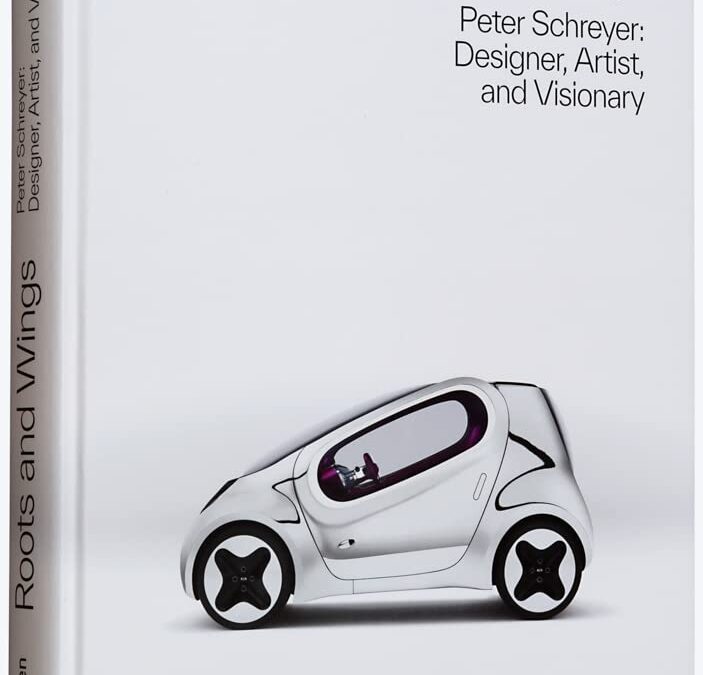
Roots and Wings explores the life and work of Peter Schreyer, one of the most influential car designers of our time. A Renaissance man with an eye for detail and foresight for innovation, he geared himself toward success. Responsible for the births of some of the 20th-century’s most iconic cars, his industry experience brought instant classics to the road. From humble beginnings in Germany’s divided south to his new base in Seoul, Schreyer embodies a conduit between the west and east―bridging his homeland’s history of automotive design with South Korea, a country that has experienced stratospheric growth on the world stage in just a few decades. Looking at the formative moments and pivotal artistic discoveries that shaped his creative mindset, Roots and Wings is the never-before-told story of how a man reimagined a car brand and left a mark on history in the process.
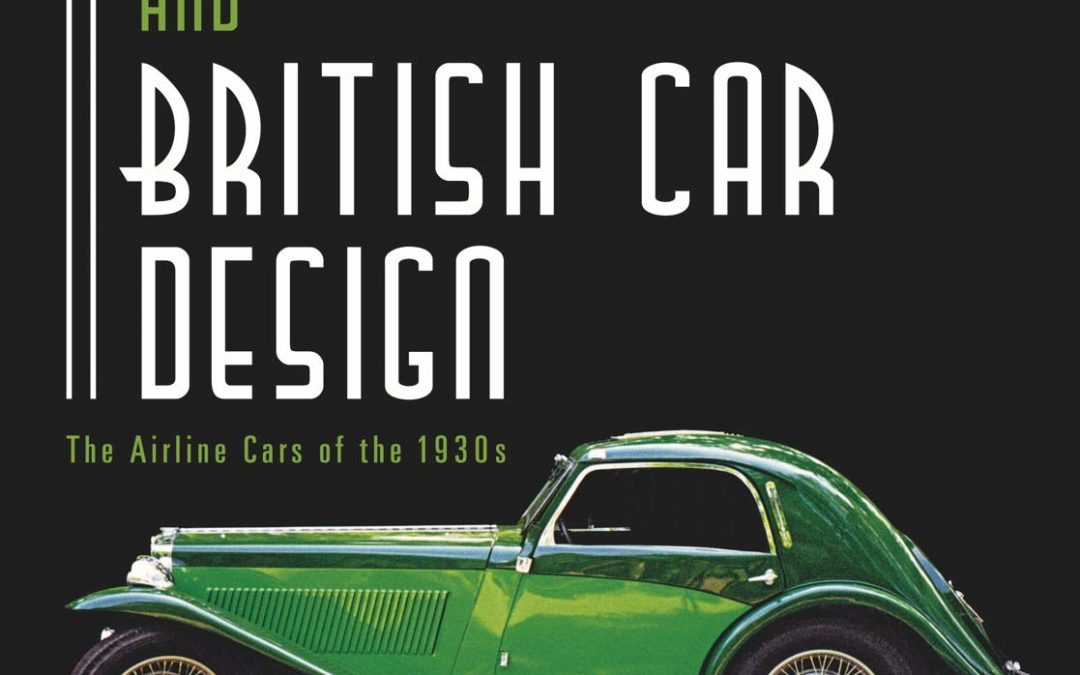
Art Deco and British Car Design is a book about automotive styling, in particular the streamlined styling that defined what are now known as Airline cars. During the mid-1930s, the majority of British car manufacturers and coach builders experimented with streamlined styling. This fashion was the result of Art Deco, an international movement that influenced design and marketing in many different industries, and produced some of the most unique and visually exhilarating cars ever produced in Britain.
Part One of the book explains and illustrates the Art Deco styling elements that link these streamlined car designs, and describes their development, their commonality, and their unique aeronautical names. The stories of the individual cars, their designers, and their development, are told in Part Two. Here, Barrie Down has collected examples of all the significant British streamlined production cars made between 1933 and 1936, many of them still represented by beautifully restored survivors.
The book is well illustrated with over 200 contemporary pictures and colour photographs of existing cars, many of which have never before been published. Art Deco and British Car Design is an instructive and visual feast for all car lovers.
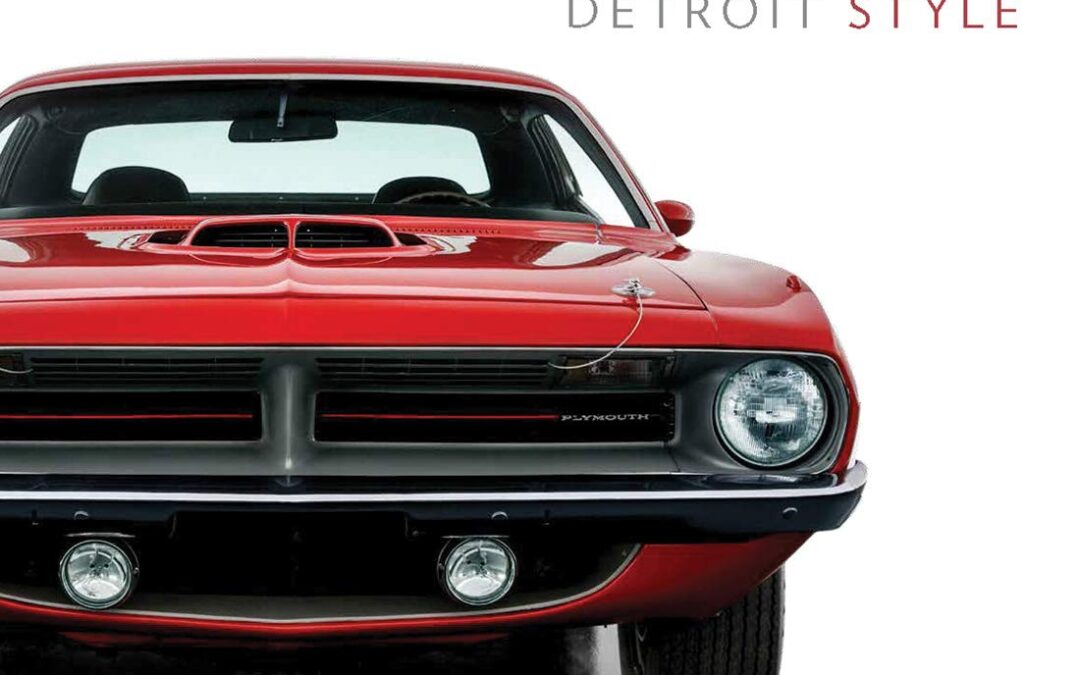
A dynamically illustrated exploration of 70 years of automotive design in the Motor City
Detroit, nicknamed Motor City, has always been a leader in car design. As the city became the center of the American automobile industry in the early 20th century, its studios became incubators for new ideas and new styles. This volume highlights the artistry and influence of Detroit designers working in the industry between 1950 and the present day, giving readers a sumptuously illustrated opportunity to discover the ingenuity of influential (and surprisingly little-known) figures in postwar American car design. Detroit Style showcases 12 coupes and sedans, representing both experimental cars created solely for display and iconic production models for the mass market. Dozens of design drawings and images of studio interiors—along with paintings and sculptures—highlight the creative process and dialogue between the American art world and car culture. These materials in addition to interviews with influential figures in car design today bring new insights and spark curiosity about the formative role Detroit designers have played in shaping the automotive world around us, and the ways their work has responded to changing tastes, culture, and technology.

Dan Sharp examines the aircraft’s technical development in unparalleled detail as well as analyzing the ongoing discussions surrounding the Me 262 at the highest levels within the Messerschmitt company, the German Air Ministry and Adolf Hitler’s inner circle.
There are many myths surrounding the development of the Messerschmitt Me 262 jet fighter. Its unparalleled performance is beyond doubt; easily able to outpace its opponents and possessing the firepower to shred them in seconds. Yet immediately after the Second World War, rumours abounded that official indifference, technical shortcomings and interference from the Führer himself had crippled the Me 262’s progress and delayed its appearance on the front line until it was far too late.
Begun as a series of design concepts during 1938, the fighter would not enter mass production until the spring of 1944. Even then it failed to make any notable impact until the closing weeks of the war, when Me 262s began destroying USAAF bombers at an alarming rate. Exactly what happened to cause this apparently late start and who was responsible has until now been largely a matter of conjecture.
Grounded in research involving thousands of wartime documents spread across archival collections in three countries, Messerschmitt Me 262 Development & Politics finally sweeps aside the myths and provides a clear understanding of the real history. Sharp examines the aircraft’s technical development in unparalleled detail as well as analysing the ongoing discussions surrounding the Me 262 at the highest levels within the Messerschmitt company, the German Air Ministry and Adolf Hitler’s inner circle.
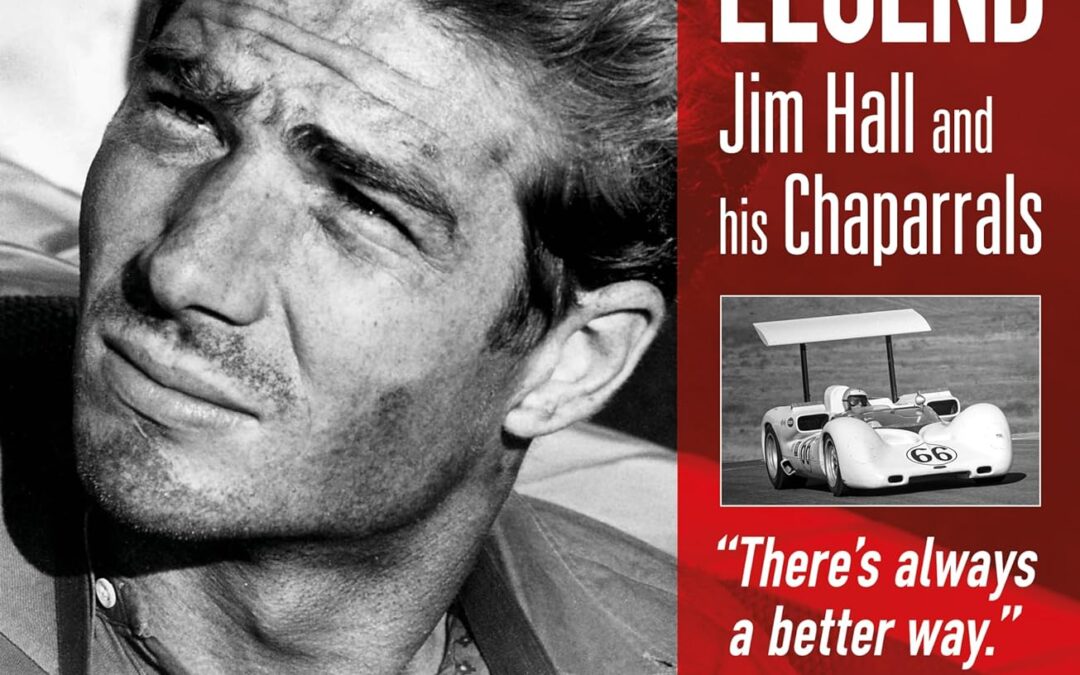
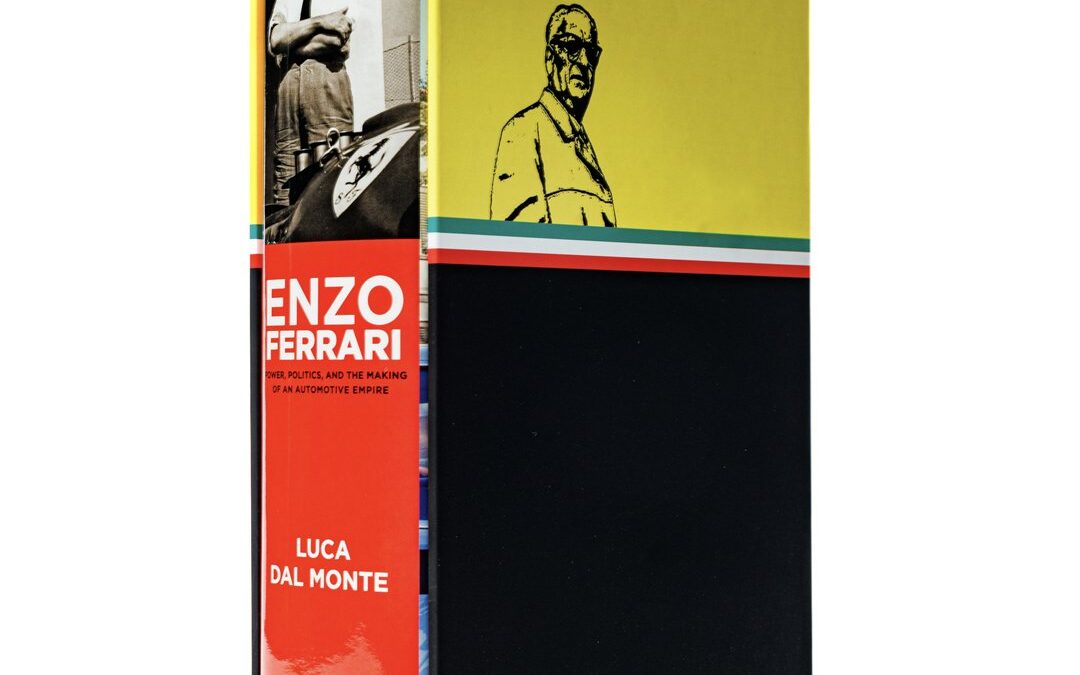
When Enzo Ferrari was born in 1898, automobiles were still a novelty in his native Italy. When he died ninety years later, the company he built stood at the top of a global industry, with the Ferrari name universally recognized for performance, racing prowess, and state-of-the-art Italian design. Enzo Ferrari: Power, Politics, and the Making of an Automotive Empire is the definitive account of an epic life.
Drawing on years of original research conducted in Italy and abroad, author and Ferrari insider, Luca Dal Monte, uncovers a wealth of new facts about Enzo’s origins, ambitions, business practices, and private life. The book revisits all the highlights of Ferrari’s rise to greatness: his driving career in the 1920s; his management of racing teams for Alfa Romeo in the 1930s; the launch of his own company and team in the late 1940s, and his unprecedented successes building cars for the road and race track in the following decades. But the book also examines lesser-known and sometimes hidden aspects of Ferrari’s career, from his earliest failed business ventures to his political dealings with Italy’s Fascist government, Allied occupiers, and even Communist leaders. And it lays bare the internal politics of the Ferrari company and team, whose leader manipulated employees, drivers, competitors and the media with a volatile mixture of brute force, paranoia, and guile.
Accompanying the in-depth text are extensive endnotes along with a full bibliography and index. The book is illustrated with four separate sections of photos, exhibits and artefacts, and opens with a foreword by former Ferrari president Luca Di Montezumolo, who previously served as the company’s Formula One team manager.
This is truly the definitive biography of Enzo Ferrari, one that makes previous accounts obsolete. Its depth, scale, and detail make it essential reading for automotive and motorsport enthusiasts. But other readers will be drawn to a sweeping story of Italian life, business, and culture during the 20th century.

COMING EARLY 2024
Nash-Healey – A Grand Alliance examines in exquisite and exacting detail the story behind America’s first postwar sports car and the unique Anglo-American partnership between Nash and Healey that gave it life, which became an international triumvirate with the later involvement of famed Italian coachbuilder Pinin Farina.
Focusing on the lives and careers of the men behind these fantastic machines, this book dives into their prior accomplishments, before reviewing the design and development of the Nash-Healey roadsters and coupes. It also explores the marque’s incredible competition record at iconic races like the Mille Miglia, 24 Hours of Le Mans and Alpine and Monte Carlo rallies. Lavishly illustrated with almost 1,200 images, most never before published, including several from Donald Healey’s own personal photographic collection, this book is essential for all Nash-Healey enthusiasts and fans of sports cars from the breed’s golden era.
- 2-volume set in slipcase
- 800 pages
- 1,192 illustrations
- Foreword by Donald Osborne
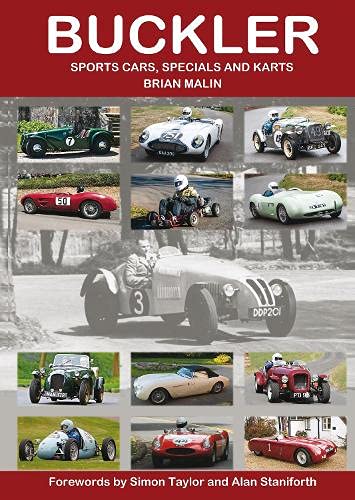
Although they were born 18 years apart, Derek Buckler and Colin Chapman were contemporaries when it came to designing and building ground-breaking sports cars in the late 1940s and early ’50s. They had much in common. Both were innovators, especially in areas of chassis design and improving the handling characteristics of their cars. Both founded successful companies and both died relatively young, Chapman in December, 1982, at the age of 54, and Buckler in 1964 at just 53 years of age. Yet, while Chapman’s Lotus went on to achieve worldwide fame, the name Buckler remains comparatively little known.
Special building was popular in the 1950s, mostly using ‘donor’ chassis from Austin 7 or Ford or simple ‘ladder’ frames but Buckler offered a multi-tubular space frame which was both stronger and lighter and, moreover, available in different models to suit different applications. He was also always ready to adapt his products to his customers’ requirements. In all of this, Buckler’s aim was to provide the impecunious enthusiast with a versatile sporting vehicle which could be used as daily transport during the week and, at weekends, in a wide range of motor sporting events from trials and driving tests to out and out racing. Often, however, the resulting Special would carry a name that concealed the Buckler contribution and a major part of the significance of Malin’s book and the vast amount of painstaking research put into it by its author is that much of that contribution is now revealed.
Buckler also, of course, made a range of complete cars starting with the versatile Mk5 and 6 and going on to encompass DD1 and DD2 with De Dion rear ends and the BB100 with backbone chassis introduced considerably before Lotus’s Elan and their other similarly based models. When karting became popular in the early 1960s, Buckler’s space frame technology found another application for which it was ideal and it became a major player in this burgeoning branch of motor sport. Buckler was also successful with its range of accessories including engine and transmission components and most notably its much admired close-ratio gears.
Brian Malin, the author, first owned a Buckler car in the 1970s and today competes in his Mk 5 in hill climbs and other events. He is an active member of the Buckler Register as well as the British Historic Kart Club and is often to be seen racing or demonstrating his Buckler kart so he is well placed to compile this comprehensive history of all things Buckler. It was first made available in loose-leaf form as long ago as 1990 but this is its first publication as a fully-fledged book, revised, updated and with additional material. Chassis design guru – and Buckler owner – the late Alan Staniforth provided the original foreword and this has been updated and included along with a new foreword by commentator and doyen of motor sport journalists, Simon Taylor.
The fourteen chapters begin with ‘Buckler and the Company’, cover the production and racing cars with some individual histories, the Buckler accessories including one chapter on the badges alone, overseas distribution – New Zealand was a particularly strong market for Buckler – and a fascinating section on the car advertisements before going on to cover the kart story in similar detail. The same number of appendices include reproductions of road tests, articles written by Derek Buckler, specifications of close-ratio gears and Buckler-tuned Ford engines, kart track tests and even one on Buckler letterheads. Malin’s work is truly encyclopaedic and therefore remarkable value for money not just as a reference on the Buckler marque but for its entertaining insight into the world of amateur motor sport of its time. The hundreds of illustrations range from reproductions of high quality contemporary and recent photographs to some admittedly lower quality originals, some of them obviously retouched to improve clarity, whose inclusion is well justified for their essential contribution to the Buckler story.
Brian Malin is to be congratulated for his perseverance in finally bringing to publication a book which is, to all intents and purposes, the full Buckler story.
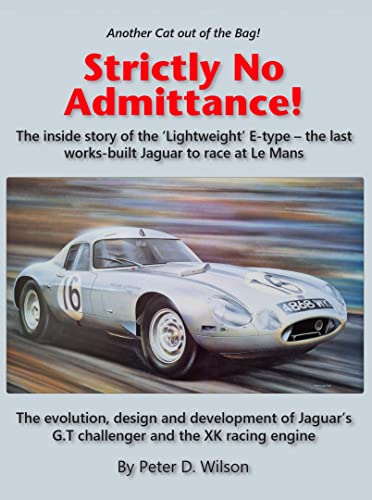
This impressive, large format book tells the inside story of the ‘Lightweight’ E-types. Built just in 1963, they are now amongst the rarest and most desirable of the race cars which came from Jaguar’s famous Competition Department – to which indeed there was ‘Strictly No Admittance’ for ordinary mortals! The book covers the evolution, design and development of Jaguar’s G.T. challenger and its XK racing engine. It is written by automotive engineer Peter Wilson who himself worked in the Competition Department throughout the period, where, together with his colleagues, helped build, and develop the production E-type through to its final form – the highly competitive and successful ‘Lightweight’ E-type. Peter’s remarkable recall of those events 60 or more years ago is reinforced by the hundreds of hours he spent in the Jaguar Daimler Heritage Trust’s impressive archives, and by many conversations with his former colleagues at Jaguar. The result is a book of astonishing detail (every single engine ever used by the factory in Lightweight E-types is, for example, identified and fully documented), while Peter’s account of how the car evolved from previous models, and the technicalities of how the engine, transmissions, brakes and bodywork were built and developed, are recorded in unprecedented detail. “The Lightweight E-type was created under the aegis of Jaguar’s founder, Sir William Lyons, and his engineering director William Heynes CBE”, writes publisher Paul Skilleter. “But the cars needed to be built and maintained, and Peter takes us into that ‘holy of holies’ and introduces us to the men who created the Lightweight E-type ‘in the metal’. “However, in successfully persuading Peter Wilson to follow up his XJ13 book with one on the Lightweight E-type, I hadn’t realised what I had let myself in for… The sheer quantity of words, graphs, diagrams and pictures which Peter presented me with was breathtaking – as was also the huge depth of the research clearly
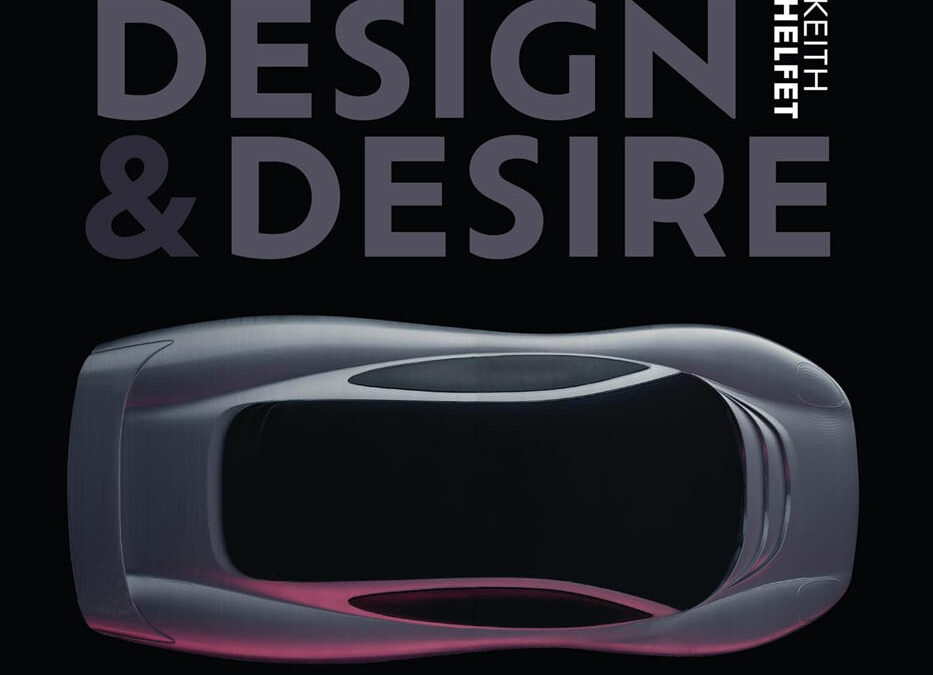
When Keith Helfet embarked upon an ambitious project to create a new body shape for a secondhand Triumph Spitfire using little more than foam offcuts and plaster of Paris, a life as one of the world’s most successful automotive designers seemed like an impossible dream. And yet that’s precisely what he would become.
After studying at London’s prestigious Royal College of Art, the South-African born youngster secured a job at Jaguar, where he would meet his mentor – marque founder Sir William Lyons. Thanks to his encouragement and guidance, Helfet would go on to create a number of iconic designs such as the XJ220 supercar, the XK180 and the beautiful F-type concept created in 2000.
With diversions into medical imaging, product design, power-assisted bicycles and electric vehicles, Design & Desire offers a personal insight into a unique and varied career that has spanned more than four decades – and counting…
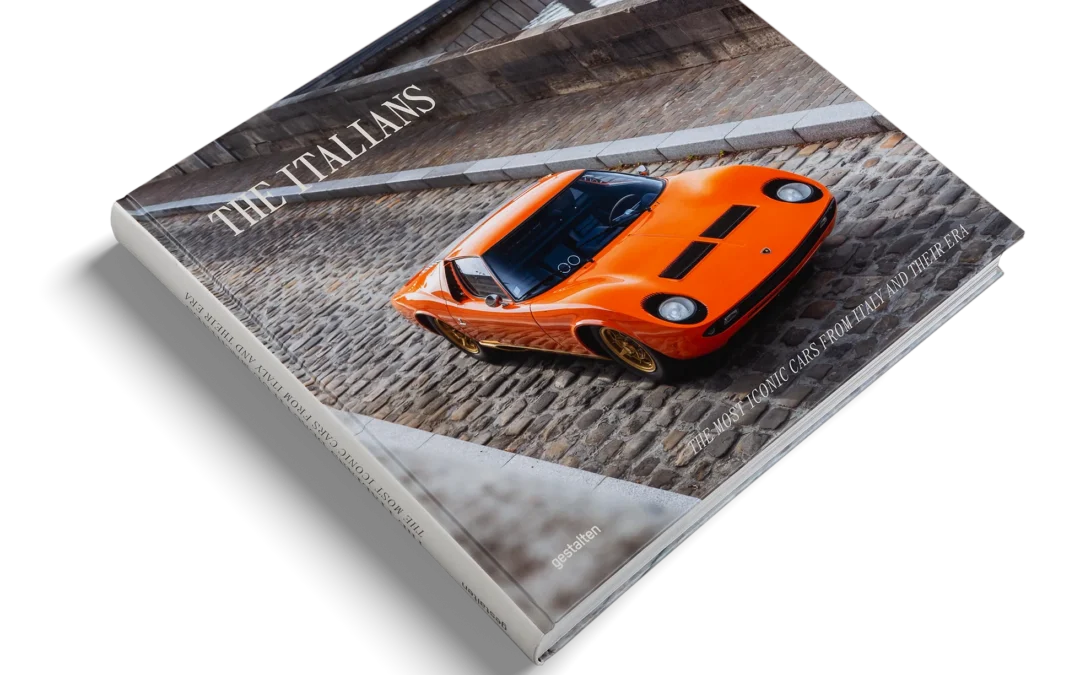
Italy is the homeland of “La Bella Macchina” and the cradle of automotive culture. This book celebrates the most iconic cars and visionary designers from the peninsula.
This stunningly illustrated book takes readers on a journey through the history of Italian automotive design, showcasing some of the most iconic and beloved models from the 1920s to the early 2000s.
Delving deep into the craftsmanship and artistry of vintage automobiles, this book explores how Italian car design has been at the center of technology, culture,and creativity—and how Italian designers like Pininfarina, Zagato, Bertone, Giugiaro, Gandini, and Ghia have influenced international car designs and brands.
With striking archival and contemporary images, The Italians – Beautiful Machines reveals the fascinating stories behind some of the most famous cars from Italy and what makes them so desirable. This book uses the lens of automotive design to chart the evolution of culture over the last 100 years. The Italians – Beautiful Machines is an impactful celebration of Italian car design and its lasting influence on design and culture.
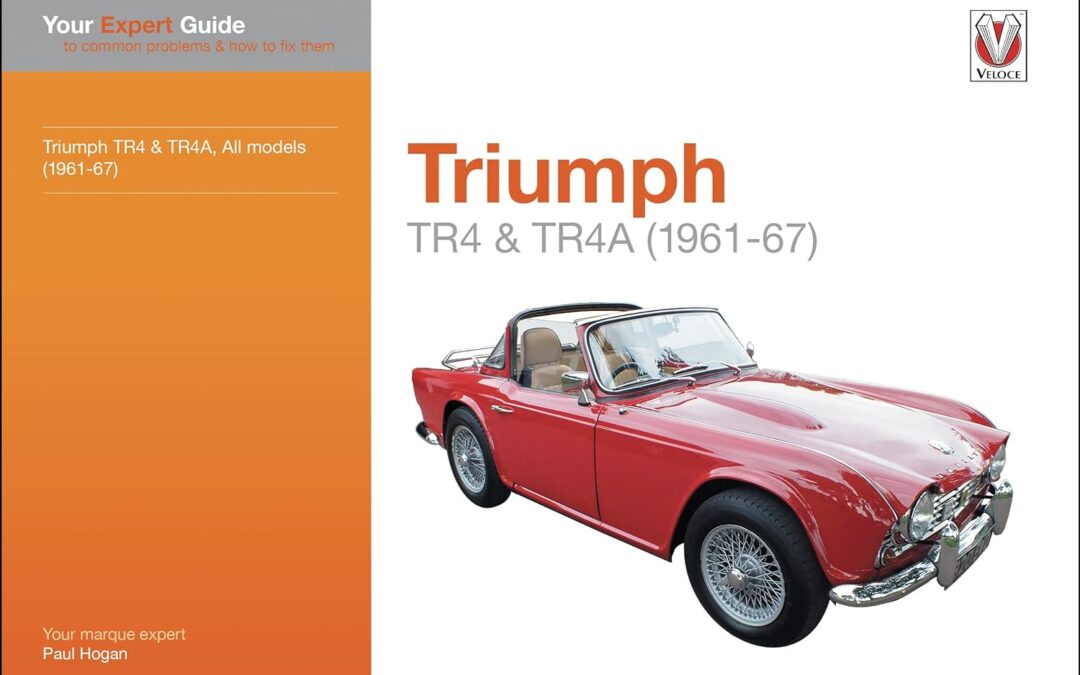
The TR4 represented a new breed of British sports car. Its modern lines, and accessories, such as wind-up windows and face-level ventilation, were a big departure from the earlier TR3 models. While TR4 mechanical parts may not have been new, the introduction of IRS (independent rear suspension) on the TR4A set a new benchmark for sports cars of that era. Performance was solid, if not spectacular, with 109 mph attainable in overdrive top, and these TRs found a ready market in all parts of the world. Now nearly 60 years old, the TR4 and TR4A still attract a huge following worldwide. This book is designed to offer owners and potential owners of these cars an insight to the common problems that can arise and how to fix them, and often making an improvement at the same time. Arranged into easy to follow sections – engine, driveline, suspension, etc – you can see not only where the problems arise, but how to solve them. Information is also provided on owners’ clubs and spares suppliers to help keep your car in good condition and on the road.
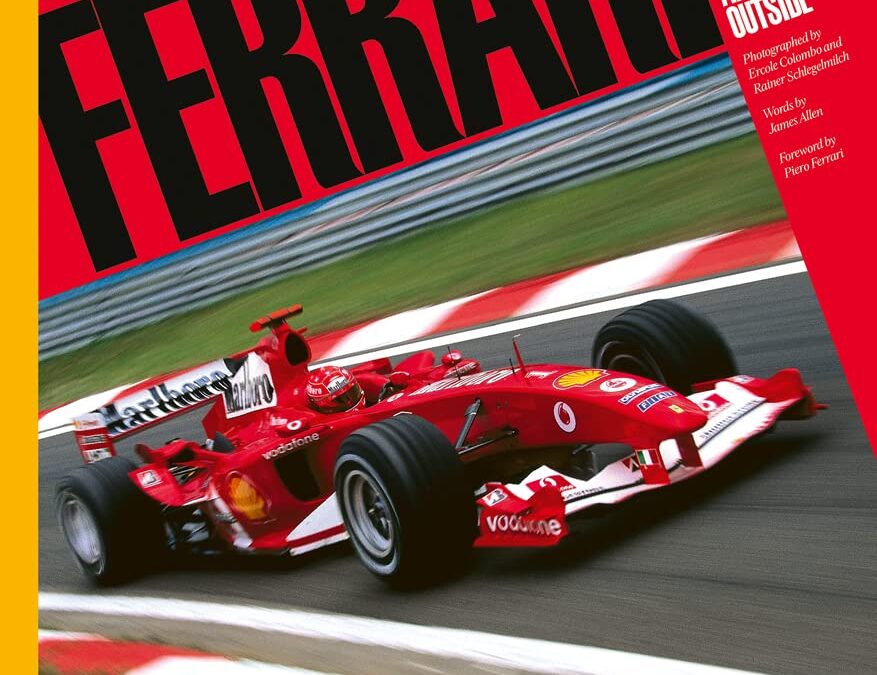
- Ferrari Formula 1 through the lenses of two legendary photographers
- Featuring hundreds of stunning photographs, many rarely seen
- Contributions from iconic figures including Piero Ferrari, Luca di Montezemolo, Stefano Domenicali, Jean Todt and legendary designer Mauro Forghieri
- A must-have book for the Ferrari fan
Ferrari is the beating heart of the global sporting phenomenon that is Formula 1. Its founder, Enzo Ferrari, was born on the racetrack as a competition driver before he became a creator of mythical road cars. No other team can inspire the passion or match the stories of triumph and tragedy. Rainer Schlegelmilch and Ercole Colombo are two of Formula 1’s most legendary photographers. They covered the sport from the 1960s onwards, with amazing access inside the Scuderia. Here, for the first time, they come together to pay tribute to Formula 1’s most iconic team. Ferrari: From Inside and Outside features contributions from iconic figures including Piero Ferrari, Luca di Montezemolo, Stefano Domenicali, Jean Todt and legendary designer Mauro Forghieri. The book is edited by internationally celebrated Formula 1 commentator and Michael Schumacher’s biographer, James Allen.
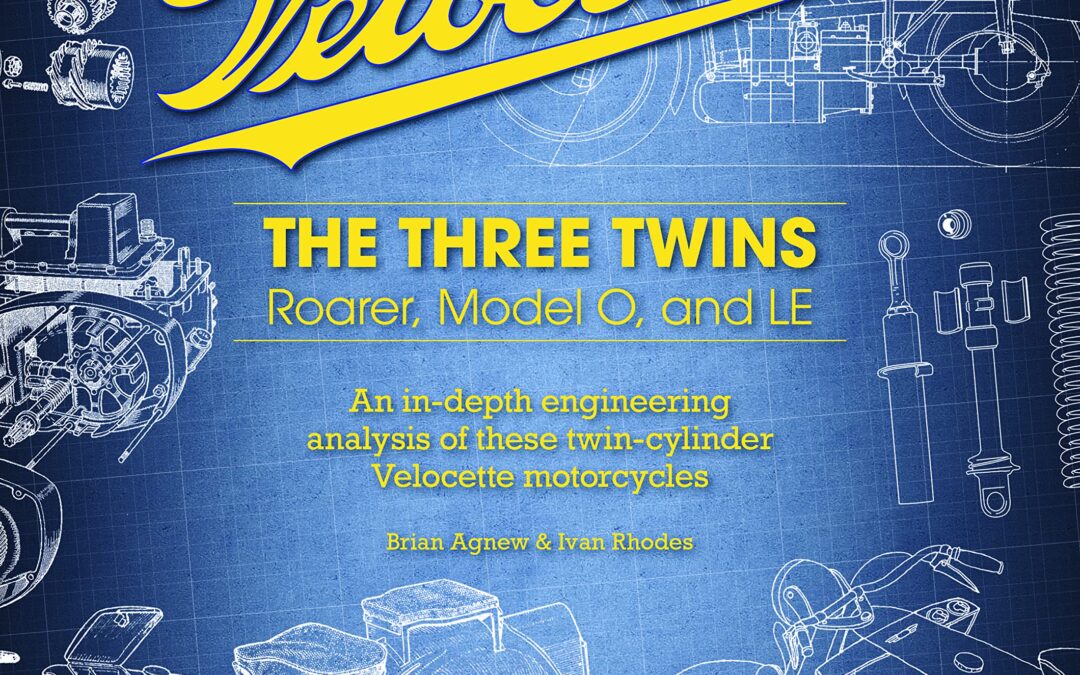
The Veloce company is well regarded for producing some of the best single-cylinder motorcycles in race form and for private use. It is not so well-known that Veloce Ltd also produced some twin-cylinder machines: the Roarer, for racing, and the Model O for production. These bikes had many engineering features in common, such as twin contra-rotating crank shafts, inline cranks, shaft drive, and swing arm rear suspension. The supercharged Roarer was never raced because of the advent of war; this also put paid to the development of the Model O, which would have been the first so-called “Superbike.”
After the war, the Goodman family, owners of Veloce Ltd, focused on the production of a “Motorcycle for Everyman” – an idea that had featured in their production bikes since the formation of the company. They drew on the ideas embodied in the Roarer and the Model O to produce the twin cylinder LE range of motorcycles. These, however, were not well received by the motorcycling public, and many blame the production of the LE for the eventual demise of the company.
The purpose of the book is to present, from an engineering perspective, an analysis of the Roarer and the Model O, comparing and contrasting the methods adopted by their designers to meet the different design specifications of these bikes, and to illustrate how the ideas developed in this exercise appeared in the LE range of motorcycles.
The authors, Brian Agnew and Ivan Rhodes, met in the 1960s when Brian worked at Rolls-Royce Derby. They spent their weekends tinkering with motorcycles, and both have an intimate knowledge of the Velocette twins both from their time spent together and from their personal projects.

Aston Martin is a marque that holds a special place in the British motor industry. As a manufacturer of cars for over 100 years, its history is tied up with the British psyche, and the marque holds a special place in the hearts of all motoring enthusiasts. This book charts the history of Aston Martin from its early days in central London, as Banford and Martin, through the Bertelli years in Feltham and the post-war David Brown years at Newport Pagnell to the current day with its purpose-built, state-of-the-art factory in Gaydon, Warwickshire. Now seen as an iconic luxury British sports car manufacturer, Aston Martin has been designing, manufacturing and racing cars for over 100 years, almost continuously. Known for combining quality, style and performance in its products, the company has often struggled to balance these attributes with financial success. Fortunately, over the years generous investors who recognize the potential in the company have always been on hand to rescue and perpetuate the brand. Looking at the engines, the cars, the people, the business and car owners, this book tells the story of a quintessentially British marque.
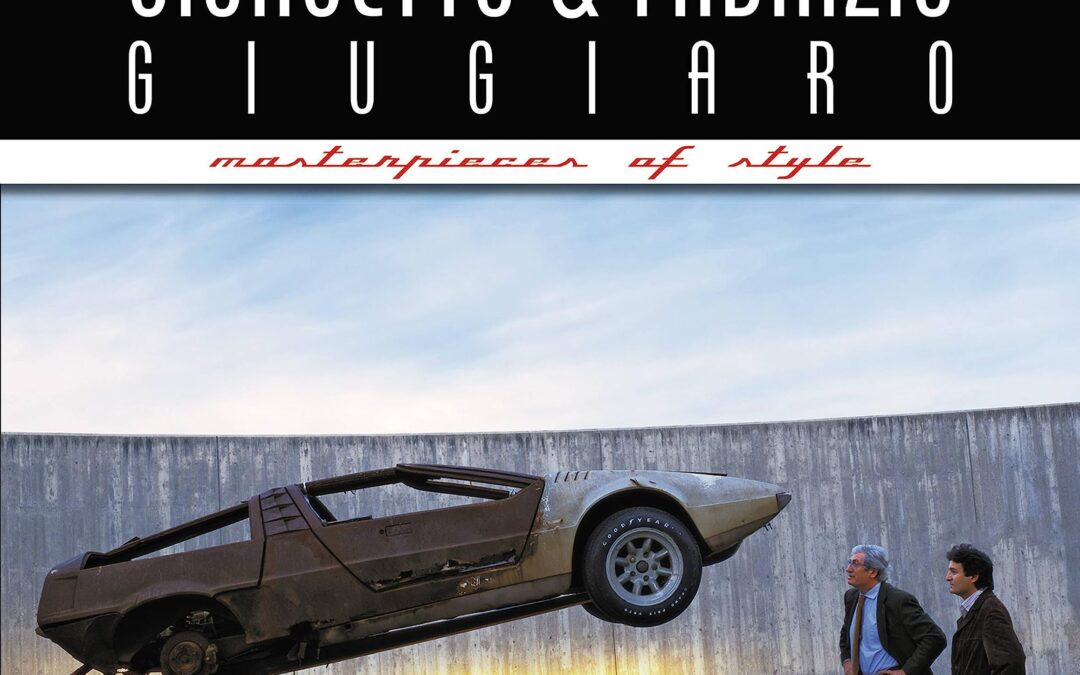
The technical and stylistic history of Giugiaro, one of the most prestigious names of automotive design, in a new updated edition including the most recent creations born under the new GFG Style brand.
Giugiaro is one of the most prestigious names in the history of automotive design, synonymous with iconic cars such as the Alfa Romeo Giulia Sprint GT and Alfetta, the Volkswagen Golf, the Audi 80, the Fiat Panda, Uno and Punto, the Lancia Delta, Thema and Prisma and the Maserati Bora, Ghibli and Merak, to mention but a few of the most successful designs to carry the Giugiaro name. Born in 1938 at Garessio in the province of Turin, Giugiaro honed his professional skills at Bertone and then at Ghia before setting up on his own when founding Giugiaro Italdesign in 1968.
Fruit of the inspiration of the famous Turin designer are some of the most iconic concept cars such as the Caimano, the Iguana and the Canguro, all based on Alfa Romeo mechanicals, and the Asso di Picche and the Quadri on respectively Audi and BMW chassis.
This monograph is a new updated edition of the 2019 volume Giugiaro Masterpieces of Style and includes the most recent creations, those born under the new GFG Style brand (Giorgetto & Fabrizio Giugiaro). Among these are the concepts Sibylla (2018), Kangaroo (2019), the GFG 2030, Desert Raid and Dora, all from 2020, up to the Bizzarrini Giotto from 2023.

With his hugely successful commercial aircraft, including the legendary DC-3, founder Donald W. Douglas led his company to the forefront of aircraft manufacturers starting in the 1930s. “Depend on Douglas” was the company motto, and the company founder stood behind it with his name. Between 1945 and 1960, the DC-4, DC-6, and DC-7 four-engine “Big Prop” models were flown by many of the world’s most famous commercial airlines of the era, including Pan Am, United, American, Eastern, Delta, KLM, BOAC, Swissair, SAS, Air France, Alitalia, and Japan Air Lines. This is the history of the design, development, and operational use of the Douglas Big Props, including technical specifications and details of military variants. Period photographs bring to life the fascinating history of these early, and influential, commercial airliners, some of which still fly today.
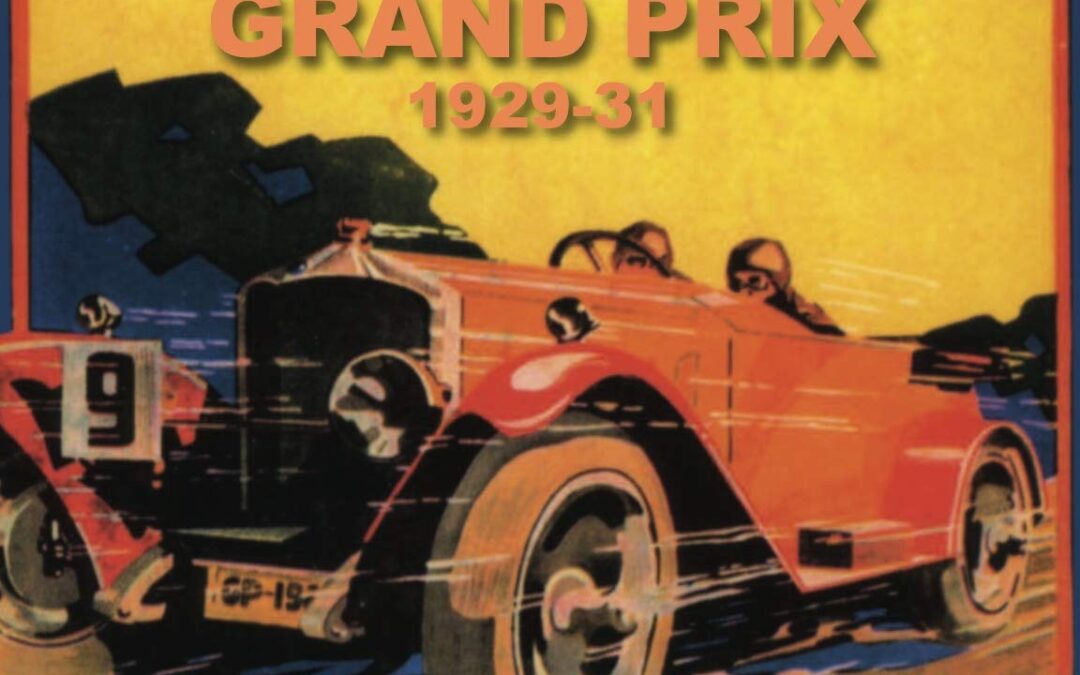
The Irish International Grand Prix 1929-1931, is a truly remarkable exploration of the earliest efforts by the newly-founded Irish Free State to gain recognition as a progressive independent modern country by its international peers.
Bob Montgomery, is the Curator of the Royal Irish Automobile Club (RIAC) Archive, said: “If I think about it, I have been researching and preparing to write this book for a period of some 20 years. I began to note the stories from people who were there and to gather photographs from the event during that time. Some of the stories and many images that can be found in this book have not been seen or heard about since the races took place in the late 1920s and early 1930s.
The book will, I hope do justice to the history of the Phoenix Park and how it’s very existence was so important to the emergence of motorsport in the early part of the last century, which culminated in the three Grand Prix. It’s a book designed to appeal to anyone with an interest in Irish history and not just the motorsport enthusiasts.






















